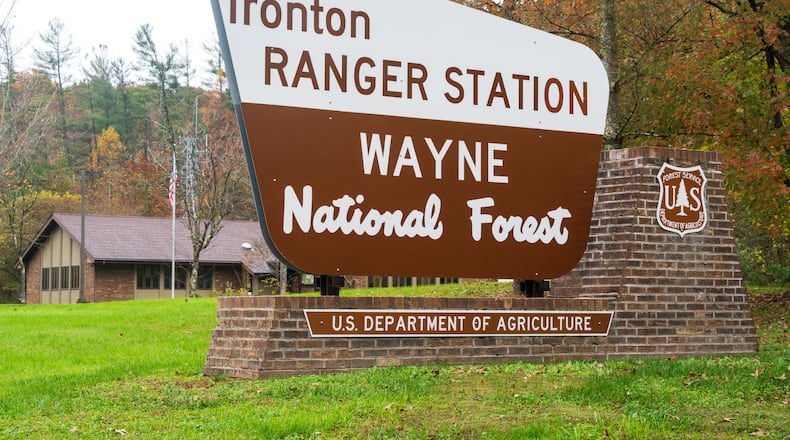The national forest’s current moniker pays tribute to General “Mad” Anthony Wayne, a Revolutionary War general “whose complicated legacy includes leading a violent campaign against the Indigenous peoples of Ohio that resulted in their removal from their homelands” in the 1700s, a Forest Service statement said.
The name is offensive because of this history of violence, according to the forest service.
“Our intention is to listen to tribal nations and community members, and take the actions needed to better serve them,” Forest Supervisor Lee Stewart said. “The new name embraces the forest’s identity as Ohio’s only national forest and the welcoming, inclusive nature of the people of Ohio.”
The Forest Service describes Wayne National Forest as “a patchwork of public land that covers over a quarter million acres of Appalachian foothills of southeastern Ohio.”
It has four separate sections — one near the far southern tip of Ohio between Ironton and Gallipolis, two sections just north of Athens, and one further east, just upstream from Marietta on the Ohio River. The forest has camping, boating, hiking and other recreation options.
Buckeye National Forest is one of the new names suggested to the Forest Service by American Indian tribes. Other proposed names considered included “Ohio National Forest” and “Koteewa National Forest.”
“The effort to change the forest name to Buckeye National Forest is based in respect and inclusion for all of Ohio’s communities and seeks to ensure the name of these federal lands is representative of all who value the national forest,” the Forest Service said. “It also follows multiple policy directives and is consistent with Agency efforts to advance equity and inclusion.”
U.S. Senator J.D. Vance of Ohio, in an Aug. 24 letter to U.S. Department of Agriculture Secretary Tom Vilsack and U.S. Forest Service Chief Randy Moore, wrote to express his “strong opposition” to the Forest Service’s plan to “strip Wayne National Forest of its historically significant name” and lauded Wayne for his efforts during and after the Revolutionary War.
“This federal effort denigrates Ohio history and represents a lack of fidelity to our nation’s founding generation,” Vance wrote.
Vance, a Republican, asked that the agency reverse its “misguided decision” to rename the forest.
“It would greatly benefit Ohioans, and all Americans, if our government could be counted on to defend our Founding Fathers instead of capitulating to politically motivated renaming efforts,” Vance said. “Until such courage can be found, I humbly recommend that the federal government disband all renaming committees.”
Multiple news organizations reported that Ohio’s Republican Speaker of the House Jason Stephens, whose district includes part of the forest, also opposed the name change, calling it “woke” and “federal government overreach trying to fix a problem that doesn’t exist.”
The Ohio Environmental Council said it supports the decision of the U.S. Forest Service to change the name.
“Ohio’s public lands should be welcoming to all,” OEC Southeast Ohio Regional Director Molly Jo Stanley said in a release. “It is important to acknowledge and understand past injustices, and how the names of our public lands can either perpetuate exclusion and injustice or help heal those wounds.
The name ‘Wayne’ is associated with the U.S. government’s “historic and violent genocide” of Indigenous peoples and their cultures, Stanley said.
“More inclusive names can be drawn from Ohio’s Indigenous and natural histories.” she said. “We encourage continued engagement with Native American tribes, and careful consideration of their voices in matters impacting federal public lands in their traditional homelands.”
Cleveland.com reported that the Forest Service discussed the name change issue with representatives of the Absentee-Shawnee Tribe of Indians of Oklahoma, Shawnee Tribe, Delaware Nation, Forest County Potawatomi, Miami Tribe of Oklahoma, Fond du Lac Band of Lake Superior Chippewa, Pokagon Band of Potawatomi Indians, Peoria Tribe of Indians of Oklahoma, and Osage Nation.
You can have input
The Forest Service is allowing public feedback on the renaming process through Sept. 5. Feedback should indicate whether there are any reasons the proposed name would be unacceptable. Comments may be submitted to r9_wayne_website@usda.gov. The Forest Service will review public input and make a recommendation to Vilsack, who has the authority to change the name.
About the Author


